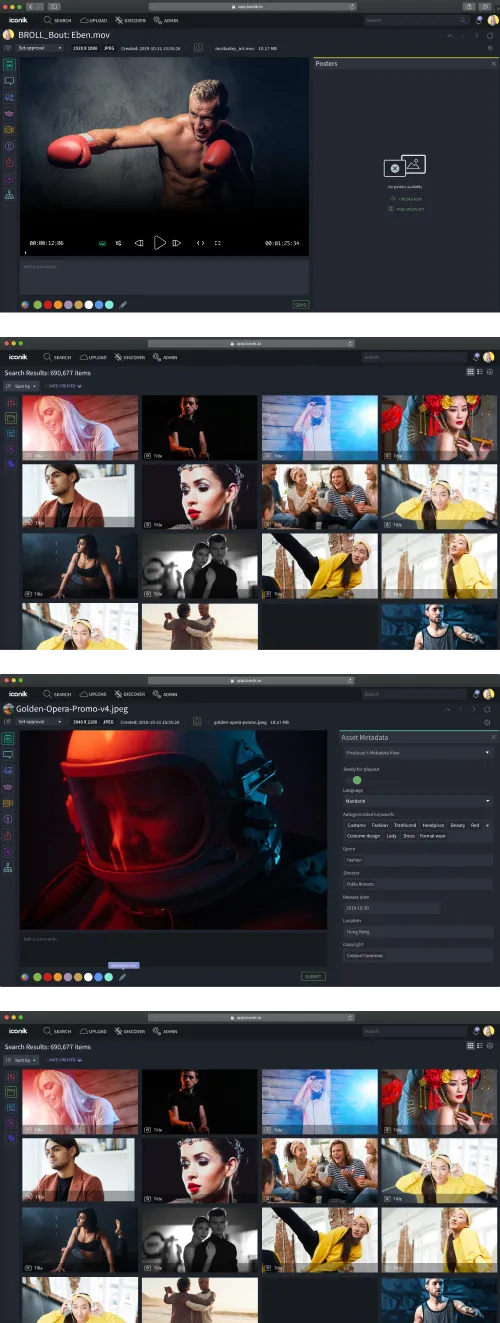A single project can trigger a cascade of new images, videos, documents, and designs. Keeping these assets organized with sprawling teams, and pressing deadlines can feel like herding cats during a fireworks display.

Many people store those new assets in folders. However, the limitations of hierarchical folder structures, such as those found on your desktop, Google Drive or Dropbox, result in a lack of visibility into each folder, which can lead to duplicated content across various locations and folders. Add to that the challenge of relying solely on folder and file names for asset identification, and you've got a recipe for a media mess.
The Power of Metadata and a Media Asset Management Taxonomy
Before we get into how to craft a simple Media Asset Management (MAM) Taxonomy, let's define a couple of key terms.
What is Metadata?
Metadata is essentially data about data. Without metadata, finding files can be difficult if you don't know the exact file name or location. Metadata holds valuable details beyond mere file names, like creation dates, project owners, and whatever information is important for your organization to track. When used correctly, metadata’s potential is limitless, and it is one of the smartest tools you can use to maximize searchability and the value of your content. You can find a full introduction to metadata for media management here.
Also read, 6 Ways to Unleash the Value of Media with iconik’s Metadata Management
What are Metadata Tags?
Metadata Tags are each individual metadata value. When your media is tagged, there are many paths to find your asset instead of a single folder path. It’s a lot like having the power of a Google search, but instead of typing out a full question, you use a couple of keywords to get your results to appear.

What is a Taxonomy?
In the context of media management, a taxonomy is a strategic guide on how to use metadata tags to classify and categorize your media assets. The real benefit it offers is consistency in how your assets are tagged. You've most likely encountered the benefits of taxonomy when searching for images on a stock photo site. There are top-level tags like "nature" with many more subcategory tags like landscapes, animals, plants, etc. With so many assets, stock resources have to choose a taxonomy that aligns with how users commonly search to make it easy for customers to find what they want.
Here are the five steps to create a taxonomy for your media:
1. Reflect on Your Current Chaos
Just like a cluttered workspace can stifle creativity, a chaotic media library can hinder productivity. Take a moment to reflect on your current organizational methods. What folder structures and file names are you using? These could potentially become metadata points, creating multiple avenues to discover your assets.
2. Transform Frustration into Metadata Fields
Remember those times when you desperately searched for a file but came up empty-handed? Don't let that frustration go to waste. When such moments strike, jot down what you were searching for and consider transforming it into a new metadata field.
3. Craft Tailored Metadata Views
As your media progresses through its lifecycle, different individuals within your organization will be looking for specific data points to help their work. This is where metadata views come into play. Metadata views present a particular subset of metadata tags. This can present a metadata view to a video editor that shows approval statuses and production affiliations, while a business manager looking at the same asset will only see metadata such as department codes and billing project details. By crafting tailored metadata views for different roles within the organization, you ensure that each team member has immediate access to the most relevant information, helping them to be more productive!

4. Identify Your Taxonomy's Cornerstones
When you start building out your taxonomy, it's essential to identify the core concepts will be built upon. These concepts will be the backbone of your organization, allowing you to classify your assets in a way that makes sense for your team and projects. For instance, if you're a western fashion lifestyle brand, your concepts could encompass "seasons," "apparel categories," and "campaigns". These concepts become the bedrock upon which you'll construct your asset categories and tags.
5. Create a Glossary to Document Your Taxonomy
Your taxonomy is like a language with its own unique vocabulary that your team uses to interact with your media assets. To ensure everyone's on the same page, consider creating a glossary that documents your taxonomy's key terms, tag hierarchies, and their meanings. This glossary will become a valuable resource, especially for new team members or those jumping into projects that were initiated by someone else. It prevents confusion and sets your organization up for better media management.
Tagging Today Will Result in Easier Media Management Tomorrow
As more assets are created, your media asset management taxonomy will ensure that your assets are easily discovered, repurposed, and shared. As you build your taxonomy, remember that it's not a one-size-fits-all solution. It adapts to your team's unique needs, growing and evolving alongside your organization, so plan to revisit and evaluate it regularly.
Of course, it requires some work, but once your media assets are getting consistently tagged, managing them will be much easier.

No more herding cats when they're all in the corral. That’s what life is like with a properly tagged media archive. Good luck.
Give iconik a try
Schedule a personalized iconik demo with one of our experts and start your free trial today.


Take the MAM Diagnostic Quiz
Need better media management?
Get tailored results to see where your biggest wins with iconik would be.
-Mar-05-2024-07-18-15-7861-PM-Mar-06-2024-08-30-19-3347-PM.png)